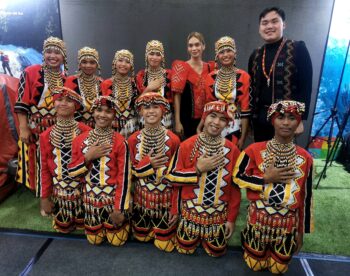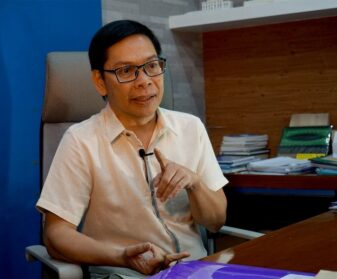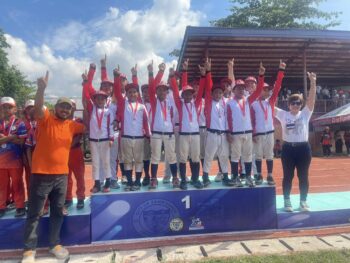
KIDAPAWAN CITY (MindaNews / 14 February) — A few days ago, Kidapawan celebrated its 26th anniversary as a component city. Republic Act 8500 was signed on 12 February 1998, formally converting the then fifty-year-old Municipality of Kidapawan into North Cotabato’s first and, to date, only city. The city government gave away plaques of appreciation to living past officials who played a role in the conversion.
Cityhood was a dream Kidapawan pursued for half a century. As early as 1952, then Mayor Alfonso Angeles Sr. tried to convince Kabacan to merge with the then mostly undivided Kidapawan to reach the requirements of cityhood. The attempt failed, and was met instead with Kidapawan’s gradual partitioning. But If Angeles plan was fulfilled, it would have formed “what would have been the largest city by land area in the world.”
The ambition to be a city may well have been instrumental in the creation of the Province of North Cotabato in 1973 (a creation Angeles, then Vice Governor, helped engineer): a provincial capital had more chances of becoming a city. Indeed as soon as North Cotabato was established, active efforts were made by the administration of then Mayor Augusto Gana, efforts which were stalled by the turmoils of EDSA but which were later revived by another mayor, Luis Malaluan. Finally, after much public debate and bureaucracy, the dream was realized in 1998, with Malaluan serving both as last municipal mayor and first city mayor.
But was the dream fulfilled?
There were benefits to being a municipality, and giving those benefits up in 1998 is the underlying cause of the many setbacks of cityhood Kidapawan has to deal with today.
What makes them all the more a loss is that while Kidapawan has given up those advantages, it hasn’t really gained much in return, aside from an increase in appropriations.
Under the Local Government Code (LGC), there is not much which makes component cities different from municipalities: Kidapawan is still under a provincial government, all its ordinances and executive orders still have to pass through that provincial government, and that provincial government still gets shares of Kidapawan’s income and resources.
Add to this the reality that across the country, provincial governments are often dominated by politicians who made themselves wealthy out of their dysfunctional municipalities (and governed by bureaucrats they have brought in by nepotism and patronage, and rarely for competence).
Such provincial officials often come into conflict with city governments more characterized by good and efficient governance, and what happens is that these city governments are forced into a system of accommodation whereby unscrupulous (or at least inept) provincial powers end up at best meddling unproductively with governance issues beyond them, or more sinisterly using the city’s growth to further inflate their already bloated political war chests.
The only real, palpable way to become a city is to become an independent city.
Under the LGC, an independent city (which could either be categorized as a highly urbanized city (HUC) or as an independent component city) is directly under the national government, not supervised by any provincial level.
The ordinances and executive orders of such cities immediately become law, and their incomes go directly to their coffers (with only part being remitted to the national government).
Such cities also get 65% of their natural resources, with the remaining 35% going to their baranggays (Kidapawan, a component city, currently only gets 45% of its resources, its baranggays get 35% but 20% goes to North Cotabato).
If Kidapawan were an independent city, it would get more of its own resources, and it would get more say on the laws that affect it, with fewer external parties getting in the way.
Such an independence I think would be what would make all the losses – the increase in RPT (real property tax) , the damage to community building, and the wanton cutting of trees – not only worth it, but easier to remedy.
Can Kidapawan do it?
It has already met the 50 million pesos annual income required under the LGC’s Section 452. The only requirement left to meet is the population minimum of 200,000. With a recorded population of 160,791 as of 2020, it is already very near.
Following the present population growth rate of 2.93%, Kidapawna may reach the population of an HUC as soon as 2027.
Considering the visible increase in migration into Kidapawan (and knowing from personal experience how reproductively active this present generation of Kidapawan people can be), the city is heading there sooner than later. It would be inevitable that Kidapawan would reach the qualifications of an HUC.
But is it ready?
That expected population growth – an additional 400,000 people – will put further strain on Kidapawan’s public services, and risks further damaging social cohesion and natural resources.
Kidapawan must learn to act fast, and act soon.
Because by the time it will reach HUC status – joining the ranks of GenSan, Davao, CdO, and Butuan – the conventional standards of progress (malls, increased urbanization, economic growth) will be outdated, replaced by the United Nation’s Sustainable Development Goals (SDGs). From my experience with the LGU, the SDGs remain foreign concepts to the municipio.
And it will not be enough that Kidapawan follow those goals, it has to have its own take on them, pursuing them based on their own localized needs and aspirations.
More importantly then, Kidapawan needs to start sowing the seeds of better governance and democratic discourse, because that independence will demand a more visionary and imaginative leadership elected by and in constant dialogue with a more intelligent and vigilant public.
Kidapawan, in other words, needs to start building a community paradoxically more intimate as it gets bigger, one that can dream big and better together.
This is still very far from the reality. But can it be done? Only the city’s people will decide.
(Mindaviews is the opinion section of MindaNews. Karlo Antonio G. David has been writing the history of Kidapawan City for the past thirteen years. He has documented seven previously unrecorded civilian massacres, the lives of many local historical figures, and the details of dozens of forgotten historical incidents in Kidapawan. He was invested by the Obo Monuvu of Kidapawan as “Datu Pontivug,” with the Gaa (traditional epithet) of “Piyak nod Pobpohangon nod Kotuwig don od Ukaa” (Hatchling with a large Cockscomb, Already Gifted at Crowing). The Don Carlos Palanca and Nick Joaquin Literary Awardee has seen print in Mindanao, Cebu, Dumaguete, Manila, Hong Kong, Bangkok, Singapore, and Tokyo. His first collection of short stories, “Proclivities: Stories from Kidapawan,” came out in 2022.)






